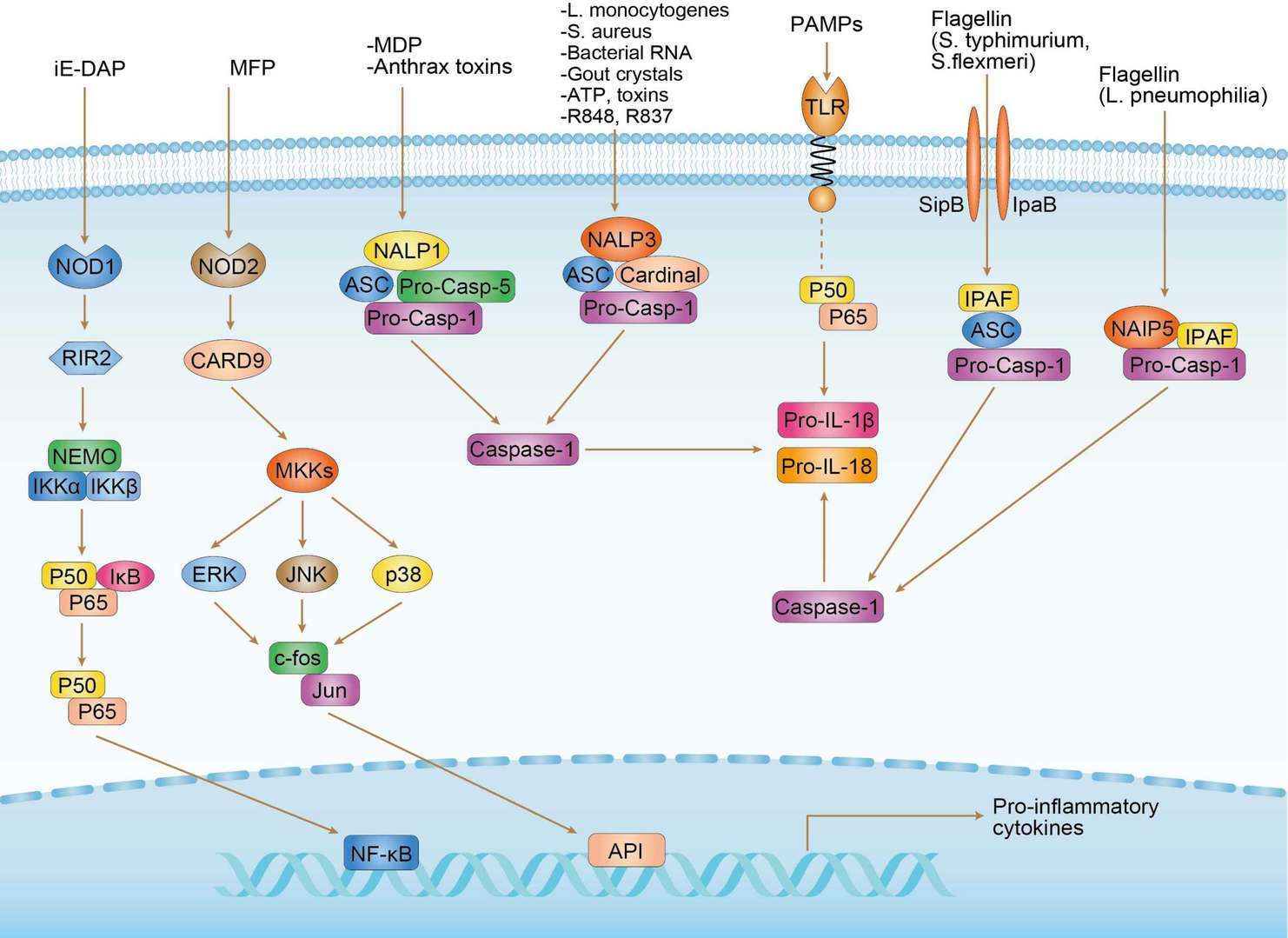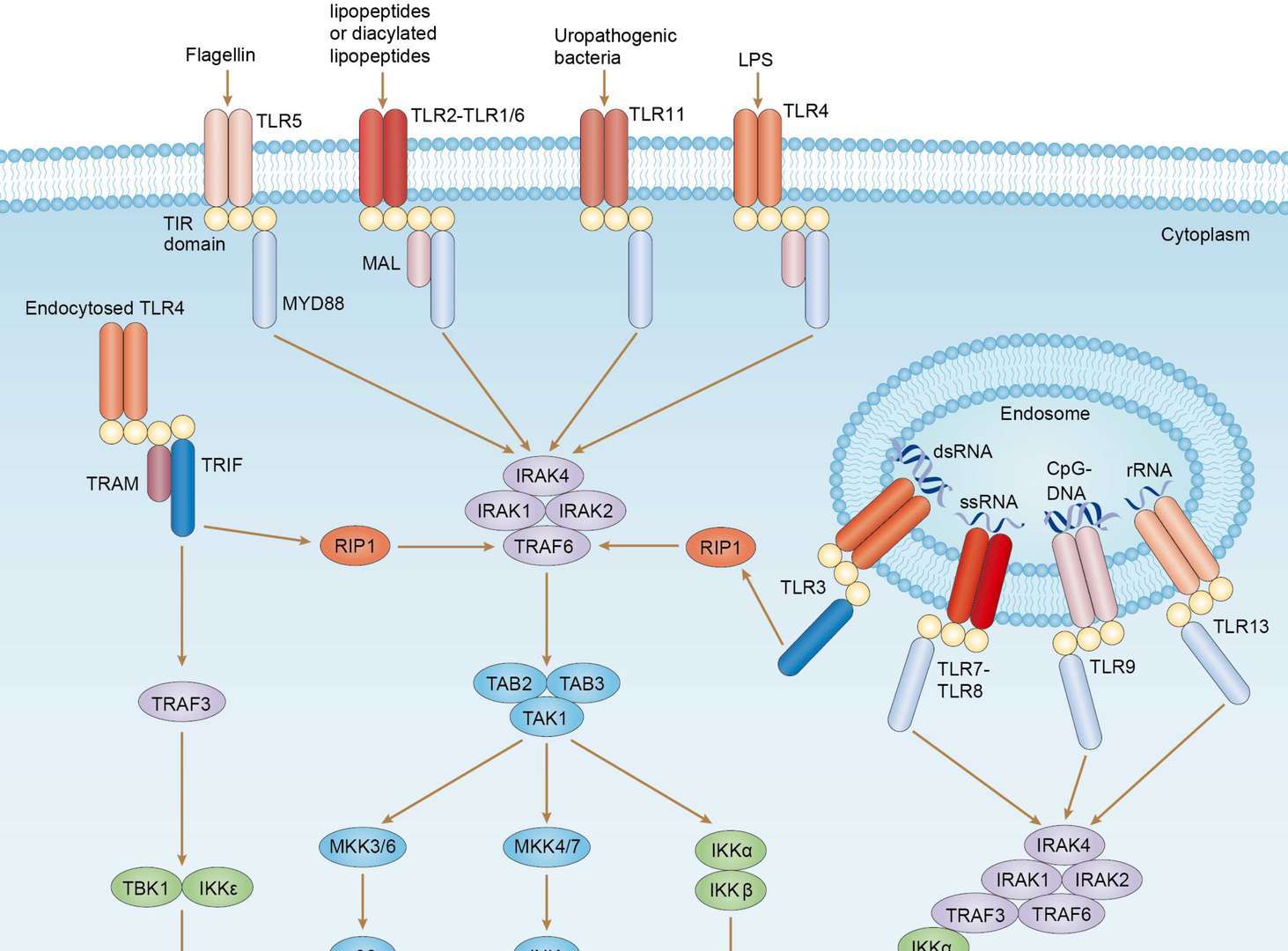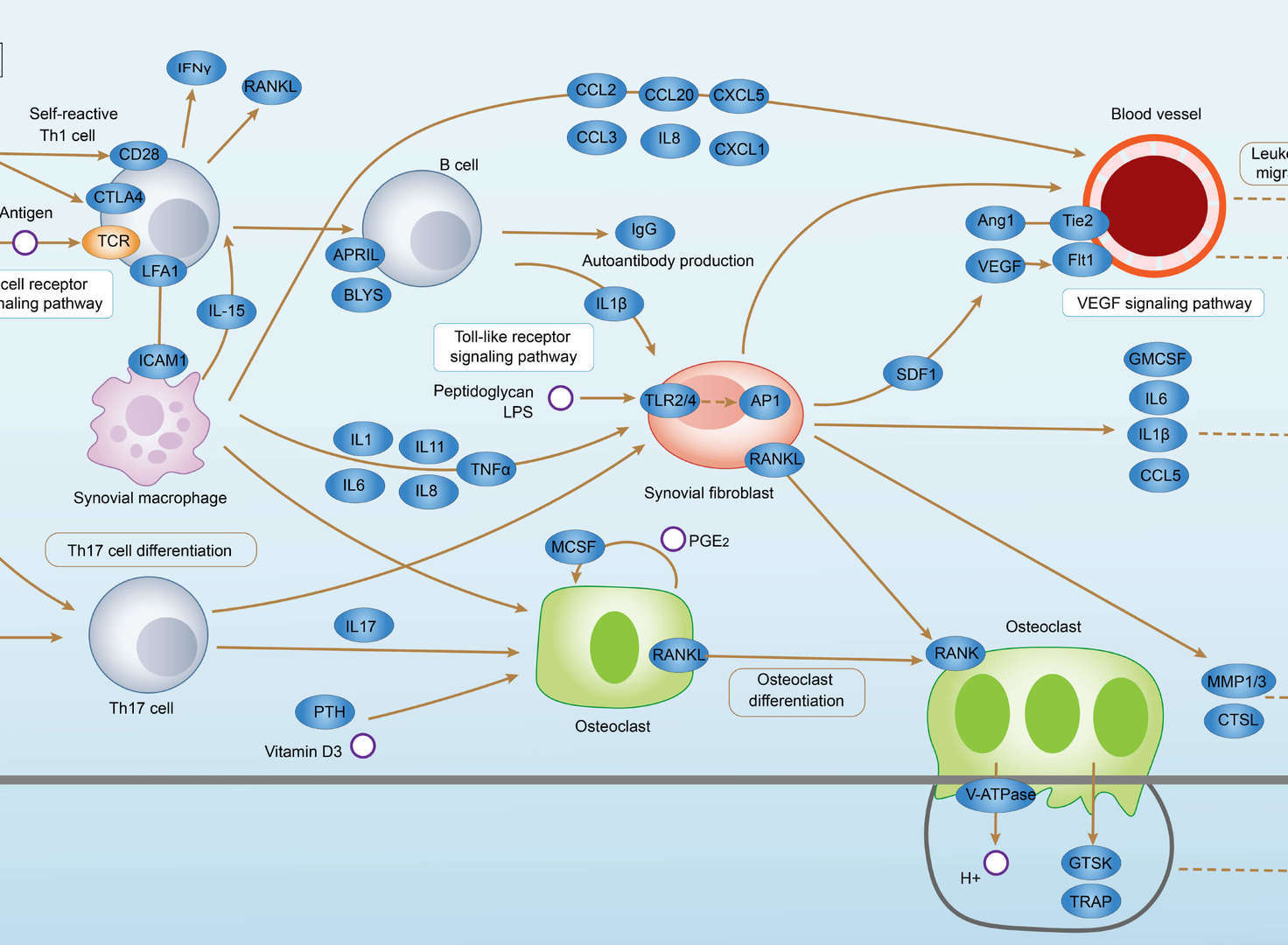 Loading...
Loading...

TLR2
 Loading...
Loading...Anti-TLR2 Products
- AbPlus™ Anti-TLR2 Magnetic Beads (VS-0424-XY254) (VS-0424-XY254)
-
- Target: TLR2
- Target Species: Human, Mouse
- Application: IP, Protein Purification
- Mouse Anti-TLR2 Recombinant Antibody (clone CBL627) (NEUT-2034CQ)
-
- Species Reactivity: Human
- Type: Mouse IgG2b
- Application: FC, CyTOF, Neut
- Human Anti-TLR2 Recombinant Antibody (NEUT-2033CQ) (NEUT-2033CQ)
-
- Species Reactivity: Human
- Type: Human IgA2
- Application: Neut, FC
- Mouse Anti-Tlr2 Recombinant Antibody (NEUT-2032CQ) (NEUT-2032CQ)
-
- Species Reactivity: Mouse
- Type: Mouse IgG2a
- Application: Neut
- Mouse Anti-TLR2 Recombinant Antibody (clone TL2.1) (NEUT-2031CQ)
-
- Species Reactivity: Human
- Type: Mouse IgG2a, κ
- Application: FC, IP, Block, IHC, WB
- Human Anti-TLR2 Recombinant Antibody; scFv Fragment (TAB-269CQ-S(P)) (TAB-269CQ-S(P))
-
- Species Reactivity: Human, Mouse
- Type: Humanized scFv
- Application: ELISA, FC, WB, IP
- Human Anti-TLR2 Recombinant Antibody; Fab Fragment (TAB-269CQ-F(E)) (TAB-269CQ-F(E))
-
- Species Reactivity: Human, Mouse
- Type: Humanized Fab
- Application: ELISA, FC, WB, IP
- Human Anti-TLR2 Recombinant Antibody (TAB-269CQ) (TAB-269CQ)
-
- Species Reactivity: Human, Mouse
- Type: Humanized IgG1, κ
- Application: ELISA, FC, FuncS, IP, Inhib
-
- Species Reactivity: Human
- Type: Mouse antibody
- Application: ELISA, FC, IP
- Human Anti-TLR2 Recombinant Antibody (HPAB-0052-YC) (HPAB-0052-YC)
-
- Derivation: Humanized
- Species Reactivity: Human
- Type: Humanized IgG
- Application: Neut
-
- Species Reactivity: Human, Mouse
- Type: Rabbit IgG
- Application: WB, IHC-Fr, IHC-P, ICC, IF
- Mouse Anti-TLR2 Recombinant Antibody (VS3-CJ155) (VS3-CJ155)
-
- Species Reactivity: Human
- Type: Mouse IgG1, κ
- Application: WB
-
- Species Reactivity: Human
- Type: Mouse IgG
- Application: WB, ELISA
-
- Derivation: Mouse
- Species Reactivity: Human
- Type: Mouse IgG1
- Application: WB, ELISA
-
- Species Reactivity: Human
- Type: Mouse IgG
- Application: WB, ELISA
- Mouse Anti-TLR2 Recombinant Antibody (clone T2.5) (MOR-0004-FY)
-
- Species Reactivity: Human, Mouse
- Type: Mouse IgG1
- Application: FC, FuncS, IA, IF, IP
- Rabbit Anti-TLR2 Antibody (MOB-0271MC)
-
- Species Reactivity: Reacts with: Human
Predicted to work with: Mouse, Rat, Sheep, Horse, Dog, Chimpanzee, Cynomolgus Monkey, Rhesus monkey, Gorilla, Chinese Hamster - Application: WB
- Species Reactivity: Reacts with: Human
-
- Species Reactivity: Mouse, Rabbit
- Type: Rat IgG2b, κ
- Application: FC, FuncS, IF, Neut
-
- Species Reactivity: Human, Mouse
- Type: Human IgG1
- Application: FuncS, Block
- Rabbit Anti-TLR2 Recombinant Antibody (clone JM22-41) (MRO-1501-CN)
-
- Species Reactivity: Human, Mouse, Rat
- Type: Rabbit IgG
- Application: WB, IF, IHC, FC
- Human Anti-TLR2 Recombinant Antibody (clone Tomaralimab) (VS-0723-WK9)
-
- Derivation: Chimeric (mouse/human)
- Species Reactivity: Human
- Type: Chimeric (mouse/human) IgG4
- Application: FC
-
- Derivation: Mouse
- Species Reactivity: Human
- Type: Mouse IgG2a, κ
- Application: WB, FC, IF, IHC, FuncS
- Human Anti-TLR2 Recombinant Antibody; scFv Fragment (HPAB-0052-YC-S(P)) (HPAB-0052-YC-S(P))
-
- Derivation: Humanized
- Species Reactivity: Human
- Type: Humanized scFv
- Application: Neut
- Human Anti-TLR2 Recombinant Antibody; Fab Fragment (HPAB-0052-YC-F(E)) (HPAB-0052-YC-F(E))
-
- Derivation: Humanized
- Species Reactivity: Human
- Type: Humanized Fab
- Application: Neut
- Mouse Anti-TLR2 Recombinant Antibody (TAB-268CQ) (TAB-268CQ)
-
- Species Reactivity: Human, Mouse
- Type: Mouse IgG1, κ
- Application: FC, IHC, IF, WB
- Mouse Anti-TLR2 Recombinant Antibody; Fab Fragment (TAB-268CQ-F(E)) (TAB-268CQ-F(E))
-
- Species Reactivity: Human, Mouse
- Type: Mouse Fab
- Application: ELISA, FC, WB, IP
- Mouse Anti-TLR2 Recombinant Antibody; scFv Fragment (TAB-268CQ-S(P)) (TAB-268CQ-S(P))
-
- Species Reactivity: Human, Mouse
- Type: Mouse scFv
- Application: ELISA, FC, WB, IP
-
- Species Reactivity: Human
- Target: TLR2
- Host Animal: Human
- Application: ELISA, FC, Neut, Cell-uptake
- Anti-Human TLR2 Immunohistochemistry Kit (VS-0525-XY7302)
-
- Species Reactivity: Human, Monkey
- Target: TLR2
- Application: IHC
- Anti-TLR2 Immunohistochemistry Kit (VS-0525-XY7301)
-
- Species Reactivity: Human
- Target: TLR2
- Application: IHC
- CytoStream™ Mouse Anti-TLR2 Recombinant Antibody (clone 11G7) (VS-0225-XY212)
-
- Species Reactivity: Human
- Type: Mouse IgG1, kappa
- Application: FC
- Human Anti-TLR2 scFv-Fc Chimera (VS-0425-FY29) (VS-0425-FY29)
-
- Species Reactivity: Human, Mouse, Monkey
- Type: Human IgG4, scFv-Fc
- Application: FC, Inhib, ELISA
-
- Derivation: Phage display library
- Species Reactivity: Human
- Type: Rabbit IgG
- Application: WB, ICC, IP
- Chicken Anti-TLR2 Polyclonal IgY (BRD-0588MZ)
-
- Species Reactivity: Human, Mouse, Rat
- Type: Chicken antibody
- Application: WB
- Mouse Anti-TLR2 Recombinant Antibody (clone 8F11G10) (VS7-0425-WR1000)
-
- Species Reactivity: Human
- Type: Mouse IgG1
- Application: WB
- Mouse Anti-TLR2 Monoclonal Antibody (clone 2D6) (VS7-0425-WR1002)
-
- Species Reactivity: Human
- Type: Mouse IgG1
- Application: WB
- Mouse Anti-TLR2 Recombinant Antibody (clone 7G5F4) (VS7-0425-WR1001)
-
- Species Reactivity: Human
- Type: Mouse IgG1
- Application: ICC
- Rabbit Anti-Tlr2 Recombinant Antibody (VS13-YC1161) (VS13-YC1161)
-
- Species Reactivity: Mouse
- Type: Rabbit IgG
- Application: WB, IHC-Fr, IHC-P, ICC, IF
- Recombinant Anti-TLR2 Intrabody [Tat] (IAB-B030(T))
-
- Type: scFv-Tat
- Application: IF, FC, WB, FuncS
- Recombinant Anti-TLR2 Intrabody [+36 GFP] (IAB-B030(G))
-
- Type: scFv-(+36GFP)
- Application: ELISA, WB, ICC, FuncS
- Recombinant Anti-TLR2 Intrabody [(D-Arg)9] (IAB-B030(A))
-
- Type: scFv-(D-Arg)9
- Application: ICC, Neut, FuncS
Can't find the products you're looking for? Try to filter in the left sidebar.Filter By Tag
Our customer service representatives are available 24 hours a day, from Monday to Sunday. Contact Us
For Research Use Only. Not For Clinical Use.
Background
CD markers, Enzymes, FDA approved drug targets, Human disease related genes, Transporters
Intracellular, Membrane (different isoforms)
Cell type enhanced (Kupffer cells, Macrophages, Alveolar cells type 2, monocytes, Langerhans cells, Microglial cells)
Group enriched (neutrophil, classical monocyte, intermediate monocyte, non-classical monocyte, myeloid DC)
Cell line enhanced (HL-60, HSkMC, hTCEpi, NB-4, RPTEC TERT1, RT4, THP-1, U-937)
Interacts with LY96, TLR1 and TLR6 (via extracellular domain) (PubMed:17889651). TLR2 seems to exist in heterodimers with either TLR1 or TLR6 before stimulation by the ligand. The heterodimers form bigger oligomers in response to their corresponding ligands as well as further heterotypic associations with other receptors such as CD14 and/or CD36 (PubMed:16880211). Binds MYD88 (via TIR domain). Interacts with TICAM1 (PubMed:12471095). Interacts with CNPY3 (By similarity). Interacts with ATG16L1 (PubMed:23376921). Interacts with PPP1R11 (By similarity). Interacts with TICAM2 (PubMed:25385819). (Microbial infection) Interacts with M. tuberculosis EsxA. (Microbial infection) Interacts with M. bovis MPB83. (Microbial infection) Interacts with Staphylococcus aureus protein SSL5.
Hydrolase, Receptor


 NLR Signaling Pathway
NLR Signaling Pathway
 TLR Signaling Pathway
TLR Signaling Pathway
 Rheumatoid Arthritis
Rheumatoid Arthritis

